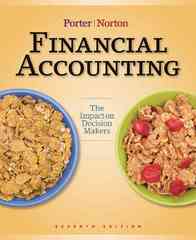
Problem 5 (20 Marks: 10 marks, 10 Marks): A car insurance company classifies drivers in 3 categories (B: Bad, N: Neutral, and G: Good). The classification is done in January of each year and the transition probabilities between the 3 categories are given by the following Transition Matrix P P= [1/2 1/2 0 1/5 2/5 2/5 [1/5 1/5 3/5 Where: the first Row/Column corresponds to B: Bad category The second Row/Column corresponds to N: Neutral category The third Row/Column corresponds to G: Good category a) Given that the insurance company started in January 1990 with 1400 drivers in each category. Estimate the number of drivers of each category in 2090. Assume that the number of drivers does not change in time. b) If the yearly premium charged to a driver depends on her/his category: it is $1000 for B: Bad drivers, $500 for N: Neutral drivers, and is $200 for G: Good drivers. A typical driver has a total of 56 years experience. Estimate the total amount a driver will pay in insurance premiums in those 56 years. Note: You can use the law of large number for Markov's chain, if you recall the law of large number states that if you repeat an experiment independently a large number of times (here it is 56 times), what you obtain should be close to the expected value. Please assume that the 56 years is long enough for the limiting theorems to provide an accurate approximation. Problem 5 (20 Marks: 10 marks, 10 Marks): A car insurance company classifies drivers in 3 categories (B: Bad, N: Neutral, and G: Good). The classification is done in January of each year and the transition probabilities between the 3 categories are given by the following Transition Matrix P P= [1/2 1/2 0 1/5 2/5 2/5 [1/5 1/5 3/5 Where: the first Row/Column corresponds to B: Bad category The second Row/Column corresponds to N: Neutral category The third Row/Column corresponds to G: Good category a) Given that the insurance company started in January 1990 with 1400 drivers in each category. Estimate the number of drivers of each category in 2090. Assume that the number of drivers does not change in time. b) If the yearly premium charged to a driver depends on her/his category: it is $1000 for B: Bad drivers, $500 for N: Neutral drivers, and is $200 for G: Good drivers. A typical driver has a total of 56 years experience. Estimate the total amount a driver will pay in insurance premiums in those 56 years. Note: You can use the law of large number for Markov's chain, if you recall the law of large number states that if you repeat an experiment independently a large number of times (here it is 56 times), what you obtain should be close to the expected value. Please assume that the 56 years is long enough for the limiting theorems to provide an accurate approximation







